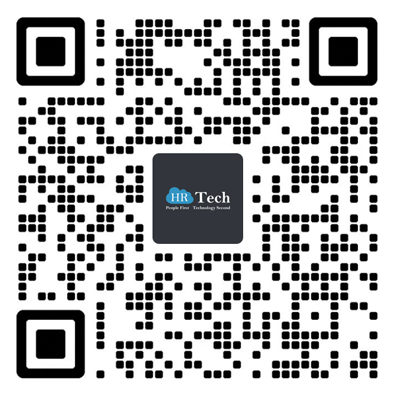-
 人工智能
人工智能
《2025年未来工作报告》未来职业新规则:1.7亿岗位新增 vs 9200万岗位消失!
《2025年未来工作报告》深入探讨未来五年全球就业市场的核心趋势与挑战。这份基于全球1000多家顶级雇主调研的报告揭示了技术变革、气候变化、人口结构、地缘经济以及生活成本上升五大趋势如何重塑劳动力市场。报告预计,2030年全球将新增1.7亿个就业岗位,其中技术、绿色转型和医疗领域的增长尤为显著。然而,自动化将导致文职和行政类岗位显著减少。此外,39%的现有技能将面临转型,85%的企业计划加大员工技能提升和再培训投资。报告强调,通过政府政策支持、企业技能投资及个人终身学习,社会各方将能更好地迎接未来挑战。
未来五年,全球劳动力市场将面临怎样的变革?你的职业又将如何受到影响?这些问题在全球化、技术创新和气候变化的浪潮下显得愈发重要。世界经济论坛最新发布的《2025年未来工作报告》(点击下载290页英文报告)为我们提供了一份详尽的路线图,描绘了2025至2030年全球就业市场的关键趋势与挑战。本报告基于对1000多家全球顶级雇主的深度调研,剖析了未来五年将重塑行业的五大宏观趋势及其对就业、技能和劳动力转型的影响。
在全球经济逐步复苏但依旧动荡的大背景下,这份报告不仅揭示了哪些职业将成为未来的“风口”,也指出了哪些技能将在新一轮竞争中脱颖而出。无论是企业还是个人,抓住这份报告中的关键洞察,将有助于在快速变化的市场中抢占先机。以下,我们将带您深入了解报告的核心内容及其背后的重要启示。
五大趋势重塑全球劳动力市场
1. 技术变革:AI和数字化的崛起
技术是未来劳动力市场变革的最重要驱动力之一。报告指出,60%的雇主认为拓展数字化接入是最具变革性的趋势,而人工智能(AI)和信息处理技术预计将成为改变行业格局的关键力量。从大数据专家到AI和机器学习专家,这些与技术相关的岗位需求将出现显著增长。同时,机器人和自动化系统的应用也将进一步提高效率,但这可能导致一些传统岗位的消失,例如数据录入员和行政助理。
2. 气候变化:绿色转型推动就业新风口
气候变化缓解和适应措施正在推动“绿色职业”的崛起,例如可再生能源工程师、环境工程师、电动及自动驾驶汽车专家等岗位都位列增长最快职业榜单。这一趋势反映了全球范围内的环保需求,也对传统行业提出了转型的迫切要求。报告指出,绿色转型不仅关乎环境保护,也意味着就业市场的新机遇。
3. 人口变化:老龄化与人口红利的双重挑战
全球人口结构的变化将对不同地区的就业市场产生截然不同的影响。在高收入国家,人口老龄化和劳动年龄人口的下降将加剧医疗、护理等岗位的需求,而低收入国家则因劳动年龄人口增长而提供了经济发展的新潜力。报告还强调,这种双重变化将进一步拉大各国在就业结构和劳动力供给方面的差距。
4. 地缘经济分裂:全球化的挑战与机遇
地缘政治紧张局势和全球贸易摩擦也在深刻影响企业的运营模式。调查显示,34%的企业认为地缘经济分裂将推动其业务模式的重大变革。这不仅影响了依赖全球供应链的行业(如汽车和航空航天),也给企业的人才需求和技能规划带来了不确定性。
5. 生活成本上升:经济压力与企业转型
尽管全球通胀正在逐步缓解,但生活成本上升仍然是许多企业的关注重点。报告显示,一半的雇主认为这一趋势将在未来五年对其业务产生深远影响。在这样的经济压力下,企业需要更灵活地调整员工福利、薪资和招聘策略。
就业的增与减:哪些职业将兴盛,哪些职业将衰退?
职业兴衰的冰火两重天
报告预测,到2030年,全球将新增1.7亿个工作岗位,同时淘汰9200万个岗位,实现净增长7800万个工作岗位,相当于当前总就业岗位的7%。增长最快的职业集中在技术、绿色转型和医疗领域,例如:
技术类岗位:大数据专家、AI与机器学习专家、软件开发人员等。
绿色转型类岗位:可再生能源工程师、环境工程师、电动及自动驾驶汽车专家等。
医疗类岗位:护理人员、社会工作者和辅导员。
与此同时,衰退最快的职业主要集中在文员、秘书、银行出纳等行政支持类岗位,这些职位的减少主要是由于自动化技术的广泛应用。
技能需求的重新定义
未来五年,39%的现有技能将被转型或淘汰。企业对以下能力的需求日益增长:
分析性思维
灵活性与适应能力
创造力与终身学习能力
与此同时,85%的雇主计划优先提升员工的技能,其中59%的员工将需要通过再培训适应新的岗位需求。报告还指出,劳动力技能的提升不仅关乎企业的竞争力,也将对员工的职业安全和发展产生直接影响。
报告的建议:迎接未来,合作共赢
《2025年未来工作报告》为企业、政府、教育机构以及个人提供了一系列可操作的建议:
企业:加大对员工技能提升和再培训的投资,尤其是在技术和绿色转型相关领域。
政府:通过政策支持职业再培训项目,同时促进绿色和数字化发展。
个人:主动拥抱终身学习,提升未来工作所需的关键技能,以应对不断变化的就业市场。
下载报告,掌握未来职业的关键趋势
这份报告不仅揭示了未来五年全球劳动力市场的核心趋势,还为个人和企业提供了宝贵的行动指南。想知道你的职业是否在增长名单中?哪些技能会帮助你立于不败之地?立即下载《2025年未来工作报告》,获取最新洞察,为你的职业未来做好万全准备!
更多精彩内容,尽在《2025年未来工作报告》。
-
 人工智能
人工智能
一点建议:2025年HRTech机构关于AI策略的观点
众所周知人工智能过去1年快速发展,正在重构HR科技领域。在2025年,HRTech服务提供商不仅需要接受AI,还必须通过策略性应用来保证作用价值。AI已经不再是新奇,而是最佳化过程、提高决策效率以及实现处理HR管理中复杂挑战的必须手段。HRTechChina 密切关注全球人力资源科技动态,2024年初更是提出RAIHR在人力资源工作中实践负责任的人工智能,并发布了RAIHR模型和倡议(点击链接可以访问,文章后面也会附录)。
2025年我们可以明确的在人力资源科技产品中落地应用更多的AI场景,但是我们也有一些观察和想法建议,分享给大家,希望能够有所帮助:
1. 将AI聚焦于解决具体问题,而非炫耀技术
我们看到全球HR科技供应商在提到AI时往往过于泛泛,使用如“智能化”“革命性”等词汇,但客户更关注的是AI能解决什么实际问题。
建议:明确AI的应用场景,例如简化招聘流程(自动筛选简历、匹配候选人)、提升员工体验(个性化学习推荐、自动解答HR问题)或优化人力规划(预测离职率、资源需求)。
落地案例:开发基于AI的预测工具,为客户提供具体的业务决策支持,比如预测最佳招聘时间或员工可能的晋升路径。
2. 注重数据质量和隐私合规
AI的核心是数据。如果数据质量低、偏差大或缺乏隐私保护,AI应用不仅无效,还可能损害客户信任。
建议:
投资于数据清洗和治理,确保数据的完整性、准确性和及时性。
遵守全球隐私法规(如GDPR、CCPA),并向客户透明地展示数据使用方式。
在AI模型中加入公平性审查,避免偏见或歧视。
3. 提供可解释性AI
许多HR领导者对AI的复杂算法感到困惑或不信任,尤其在高风险决策中(如招聘、晋升)。如果HR科技机构能够向客户提供可解释的AI,你会更好的赢得客户。
建议:开发“可解释AI”功能,让客户能够理解和信任AI的决策。例如,在候选人筛选时显示关键筛选标准或权重,让结果更透明。
技术实现:通过用户友好的界面展示AI如何得出结论,同时提供替代建议或操作。
4. 用AI增强人,而不是取代人
HR工作的核心是人与人之间的关系。AI的最佳应用是帮助HR团队更高效、更精准,而非完全替代他们。
建议:
强调AI的“增强”功能,如自动处理重复性任务(合同生成、假期审批),让HR团队专注于战略性工作。
提供协作工具,如AI建议的招聘问题或绩效改进计划,让人类决策更有依据。
5. 投资持续学习的AI模型
传统的静态AI模型会随着时间失去效用,供应商需要开发能够不断学习和适应的新技术,以确保客户始终受益。现在AI大模型选择也很多,选对模型很重要,但是需要持续学习
建议:
引入自我学习(self-learning)机制,让AI模型能够基于新数据不断优化。
定期更新算法,并根据客户反馈改进模型表现。
6. 打造专属AI工具,满足HR的独特需求
AI在HR领域的应用可以更有针对性,比如为招聘、学习与发展、员工体验设计专属模块。
建议:
在招聘中:开发智能候选人匹配工具,结合技能、文化契合度和历史表现推荐最佳候选人。
在员工发展中:利用AI构建个性化学习路径,基于员工的职业兴趣和企业目标推荐培训课程。
在员工体验中:部署AI驱动的聊天机器人,为员工提供即时的政策解答或服务请求支持。
7. 创建开放生态系统
AI技术发展的速度非常快,供应商不可能单独覆盖所有前沿应用。与其他技术提供商合作,构建开放的生态系统,可以让产品更具竞争力。这个估计不容易,目前大家所处的环境很难支持一个开放的生态,我们建议领先的HR科技机构要担起这个责任,构建开放生态!
建议:
集成领先的AI工具(这个根据大家选择,不管是字节、腾讯、阿里、或智谱等)到现有产品中。
提供API接口,允许客户将AI功能与他们的现有系统无缝整合。
8. 用AI解决前沿挑战
AI不仅能优化现有流程,还能帮助HR团队解决更复杂和前瞻性的挑战。
建议:
运用AI进行职场多样性和包容性分析,识别偏见和优化团队结构。
开发情感分析工具,通过分析员工反馈和行为数据,预测团队士气和员工敬业度。
9. 让客户参与AI的开发与优化
客户是最终的使用者,他们的需求应该成为AI开发的核心驱动力。
建议:
邀请客户参与AI功能的测试和验证,确保工具的实际效果。
建立客户反馈机制,定期调整AI应用以适应他们的业务变化。
10. 展望AI对HR业务的深远影响
AI不仅是技术升级的工具,更是推动HR从事务型角色向战略型角色转型的催化剂。
建议:
提供更多案例说明AI在决策支持、人才分析和员工敬业度预测中的成功应用。
探讨绿色AI或低碳AI技术如何为HR机构的可持续发展目标提供支持。
以上是HRTechChina 的观察和建议,希望能够有一些价值。
附录:
-
 人工智能
人工智能
Josh Bersin:调查显示,PA团队仍难以产生对业务影响
Josh Bersin公司最新研究揭示了人员分析领域的持续增长!然而,进展有限:470家全球组织中,只有10%的人员分析团队参与了业务级项目.Josh Bersin公司警告,如果人员分析无法系统化且更具商业导向,可能会失去投资和支持,使CHRO无法获得能推动业务影响的宝贵洞察。
忠告是:拥抱AI,并重新定位为“系统性商业分析”提供者,否则可能被边缘化。
多年未解的难题
在我职业生涯的早期,我曾参加HR分析会议,看到许多勤奋的分析师做着惊人的工作,但他们常常感叹无人倾听。25年过去了,这些分析师依然努力,但他们的进展仍令人沮丧。
《人员分析权威指南:通向系统性商业分析的旅程》指出,问题在于企业普遍面临人才约束。尽管AI自动化即将到来,各组织仍在寻找新技能,招聘一线工人,并在婴儿潮一代退休之际填补领导层的空缺。据预测,医疗行业在未来三年内将短缺200万名临床医生,零售业和制造业面临类似挑战。
随着这些劳动力挑战的出现,我们现在却被大量可用数据所淹没。企业使用Eightfold、LinkedIn、Lightcast和Draup等平台来精准定位人才、识别薪资需求和发现关键技能。从理论上讲,HR的分析能力应该像CRM或财务规划系统一样强大。然而,事实并非如此。
尽管在HCM(人力资本管理)平台上投入了数十亿美元,但不到10%的公司能够将HR和人员数据与业务指标直接关联。这是一个严峻的问题。
现状分析:未被充分利用的HR数据
最近我得知,Salesforce计划招聘1000名销售代表来销售其AI代理系统。(一种奇怪的做法:招聘销售代表来推广一种消除销售代表需求的系统。)Mark Benioff(Salesforce的CEO)可能想知道这些新员工需要哪些技能、应具备什么背景,以及内部有多少人可以重新部署。他有这些信息吗?我对此表示怀疑。
这就是普遍存在的问题。我们在HR软件上投入了巨资,但人员分析团队通常被困在“科学项目”中,专注于研究员工保留、技能差距等重要但内部导向的问题。有多少公司能像对待供应链、财务运营或客户保留那样严谨地测量和监控人力资本?
答案是不到10%。某种程度上,这是一种进步:上一次研究时,这个比例还更低。但显然,这个比例还远远不够高。鉴于工资是企业最大的可自由支配支出,我们难道不应该以极高的精确度测量人员的影响吗?答案当然是肯定的,只是这项工作非常困难。
困难的根源
为什么这么难?原因有以下几点:
数据分散在30到40个不同的员工系统中;
数据定义不清,例如由于季节性变化、家庭变化等因素,计算真实的员工保留率需要耗费大量精力;
HR系统与业务系统之间几乎没有明确的关联。
尽管我们购买了Workday、SAP、Oracle等ERP系统来整合数据,但这些供应商并未提供直接的跨领域关联能力。例如,要做一份“销售业绩与经验年限相关性”的报告,可能需要一周时间才能整理出正确数据,因此销售经理通常根本不会尝试。
AI带来的变革
然而,变化即将发生,而且速度很快。
人员分析是HR领域中最后一个达到成熟的领域之一,原因在于上述挑战以及某些公司缺乏“数据导向”的思维。
AI的出现正改变这一切。作为一种集成性最强、系统性最强且易于使用的数据管理技术,AI不需要专业背景即可高效操作。例如,通过AI工具如Visier的Vee、Galileo、Illuminate等,HR团队可以轻松将多种数据整合在一起并生成即时洞察。
想象一下,您将员工的销售数据输入Galileo,然后再添加员工历史数据库、薪酬数据和培训记录。如果数据标记正确,AI会立即让您得出“销售收入与任期、培训历史、管理跨度和薪酬之间的关系”这样的答案。虽然AI可能不知道某些销售代表拥有优越的市场区域或某些领导表现差强人意,但它会提供基础信息。
随后,您可以添加其他数据以完善分析。
推动系统性分析进入高层
我们称之为“系统性分析”(Systemic Analytics),即从系统的角度而非单一视角分析问题。例如,招聘对员工流失的影响有多大?工作时间安排对生产力的影响有多大?
AI可以帮助企业领导更全面地了解背后的人员问题。例如,在季度末,CEO可以谈论“亚洲地区的员工生产力增长了11%,得益于新的招聘模式和薪酬体系。”
这10%的领先企业已经通过将人员分析定义为“业务分析”职能、赋予HR团队咨询角色以及配备数据工具而取得了巨大成就。
未来已来。让AI为人员分析赋能,释放人力资本的无限潜力!
-
 人工智能
人工智能
背调巨头First Advantage(首优咨询)以22亿美元完成对Sterling Check的收购,进一步巩固其全球背景筛查与身份验证市场的领导地位
2024年10月31日,美国亚特兰大 — 作为全球就业背景筛查、身份和验证解决方案的领先供应商,First Advantage Corporation(纳斯达克代码:FA)今天宣布,公司已经成功完成对Sterling Check Corp的收购。此次交易的总价值达到了惊人的22亿美元,包括承担Sterling现有的债务。这一战略性收购不仅显著扩大了First Advantage的服务范围,也增强了其在全球背景筛查和身份验证市场的竞争力。
First Advantage的总裁兼首席执行官斯科特·斯台普斯(Scott Staples)在宣布收购完成时表示:“我们非常高兴能欢迎Sterling的才华横溢的团队加入First Advantage。通过整合双方的业务和共享文化属性,我们将更好地满足客户需求,并为我们的股东创造价值。这次合并将使我们能够通过提供高质量、成本效益的解决方案,增强我们的价值主张,帮助客户更智能地招聘,更快地入职,并保护他们最重要的资产:人才。”
此次合并将结合两家公司在背景筛查和身份验证领域的领先技术平台和创新解决方案,以交付更优的客户体验,并扩展及多元化First Advantage的垂直和地理市场覆盖,创造一个更加平衡的业务组合。并且,该交易预计将实现50至70百万美元的常年协同效应,立即对每股收益产生双位数的增长。
Sterling的加入,增强了First Advantage在提供移动优先、高度直观且数据驱动的客户和申请人体验方面的专业能力。这一优势将通过加速创新投资进一步发挥,客户将获得更广泛的产品和解决方案套件以满足其需求,这将推动合并公司的增长。合并后的公司预计在客户细分、行业和地理多样性方面拥有更大的收入分布,减少季节性波动,并提高资源规划和运营效率。
斯台普斯继续指出:“Sterling的收购定位First Advantage于长期价值创造,解锁效率并为额外增长和新技术解决方案的投资提供机会,包括AI驱动的自动化,同时进一步多样化我们的业务以增强韧性。展望未来,我们致力于促进企业文化的无缝整合,继续向我们的客户提供世界级的解决方案,快速有效地执行我们的协同计划,并去杠杆化我们的资产负债表。我们期待在即将到来的2024年第三季度财报电话会议中分享关于我们未来组织结构和战略的更多细节。”
此外,为完成这项交易,First Advantage获得了J.P. Morgan Securities LLC的领导财务顾问服务。Barclays Bank PLC、BofA Securities, Inc.、BMO Capital Markets Corp.、Jefferies Finance LLC、RBC Capital Markets、Citizens Capital Markets、HSBC、KKR Capital Markets LLC、Stifel和Wells Fargo Securities, LLC也为First Advantage提供了财务咨询服务。Simpson Thacher & Bartlett LLP担任交易的法律顾问。
对于Sterling,Goldman Sachs & Co. LLC和Citi提供了财务顾问服务,而Fried, Frank, Harris, Shriver & Jacobson LLP则担任其法律顾问。此次合并强化了First Advantage作为行业领导者的地位,使其在全球范围内提供更为高效和全面的就业背景筛查与身份验证服务的能力进一步提升。
随着市场对背景筛查服务的需求持续增长,First Advantage通过这次战略性收购,不仅能够扩大其市场份额,还能通过引入更先进的技术解决方案来提升服务质量和效率,满足客户的需求,并进一步巩固其在全球背景筛查市场的领导地位。
-
 人工智能
人工智能
全面解析Gartner人力资源转型的四大关键要素
随着企业环境的快速变化,HR职能的转型已成为提升组织竞争力的关键所在。Gartner提出了人力资源转型的四个关键要素,涵盖领导力、运营模式、团队能力与技术支持,帮助企业应对不断变化的市场需求,优化人力资源的运营效率。
下面将详细介绍这四大要素,帮助企业HR领导者更好地理解和应用。
1. 卓越的HR领导力
成功的人力资源转型始于卓越的HR领导力。作为企业人力资本和文化的领导者,CHRO(首席人力资源官)需要从传统的职能管理角色转向更具战略性和前瞻性的业务伙伴。他们不仅要制定HR战略,还需根据市场变化和企业目标调整这些战略,确保HR职能能够支持业务需求。
CHRO的五大角色:
企业文化的引领者:塑造以人为本的企业文化,提升员工敬业度。
动态人才市场中的竞争者:面对人才短缺和高竞争的市场,制定具有竞争力的招聘和保留策略。
战略变革的推动者:推动企业战略转型,确保人力资源管理符合业务目标。
利益相关者的调和者:在不同部门和领导层之间平衡各种需求,推动跨部门协作。
值得信赖的顾问:为CEO和高层提供有力的决策支持。
2. 现代化的HR运营模式
HR的运营模式是HR转型的核心所在。现代化的HR运营模式强调灵活性和敏捷性,以应对企业的不断变化需求。根据Gartner的建议,HR运营模式的转型需从以下四个方面着手:
重新定义HRBP角色:HR业务伙伴(HRBP)的角色将从事务性管理者转型为战略人才领导者。他们需要具备更强的分析能力和战略思维,以推动各业务部门的人才管理策略。
创建HR问题解决专家团队:该团队作为HR的“弹性肌肉”,能够灵活应对各类战略性问题,开发并优化HR流程、政策和实践。
建立下一代卓越中心(COEs):未来的COEs将更加灵活,依赖于外部专业资源,与HR其他职能协同工作,确保HR政策和实践的专业性和灵活性。
打造HR运营和服务交付团队:通过HR技术支持和共享服务,HR运营团队能够更高效地服务于员工和管理层,确保企业日常运作顺利进行。
3. HR团队能力提升
HR团队的能力建设是HR转型成功的基石。随着混合工作模式的普及,企业对数据驱动的HR决策和战略性人才管理的需求愈发强烈。Gartner指出,HR团队需具备以下三大关键能力:
数据驱动的HR洞察力:HR团队需要掌握如何通过数据分析洞察员工行为和需求,并将这些数据转化为切实可行的战略决策。通过有效使用人才分析技术,HR可以找到关键人才的“热区”,制定针对性的培养和保留计划。
HRBP角色分化与专业化:HRBP将进一步细化为多个角色,包括战略人才领导者、问题解决专家和人员关系管理者。每个角色都需要具备项目管理、战略咨询和关系管理等核心能力。
跨部门创新与合作:HR不仅要提升内部能力,还需通过引入外部创新和跨部门合作来解决新出现的劳动力问题。HR应成为企业创新的推动者,引导跨部门合作,确保创新想法能够在企业内部落地。
4. HR技术支持
HR技术的进步为HR转型提供了强大动力。随着生成式AI、机器学习(ML)、自然语言处理(NLP)等技术的普及,HR流程的数字化转型加速推进。Gartner指出,HR技术的应用不仅应提升员工体验,还需帮助HR实现流程自动化和数字化,从而提升整体运营效率。
HR技术战略的核心:
以人为本的HR技术应用:HR技术的目标是为员工提供无缝的工作体验,确保技术在工作流程中发挥支撑作用,而非增加负担。
平衡技术投资与风险:HR技术领导者需在创新和成本之间找到平衡,确保技术投资既能推动业务转型,又能控制潜在风险。
数据安全与隐私保护:随着远程办公的普及,HR技术需确保员工数据的隐私和安全,采用更灵活的访问管理策略,防止数据泄露。
总结
人力资源的转型不仅仅是对现有流程和职能的升级,更是对HR领导力、运营模式、团队能力和技术支持的全面重构。通过Gartner提出的四大关键要素,企业HR团队能够更好地应对未来的挑战,提升业务支持能力,推动企业实现可持续发展。
详细可以访问Gartner的官网
-
 人工智能
人工智能
【巴黎】招聘公司Candix获得18.5万欧元融资,帮助初创企业从大型科技公司挖走工程师
总部位于巴黎的招聘市场Candix刚刚从Thibaud Elziere、Paul Vidal、Sofiane Bouhali和Sophie Riottot等顶级运营商那里筹集了18.5万欧元,目的是在法国成功推出后测试美国市场。
当前的人工智能淘金热正在向许多大型科技公司的工程师们灌输一种隐秘的愿望,那就是摆脱高出市场薪酬的金手铐,通过加入早期企业获得更多的所有权和股份。遗憾的是,他们不能公开表达这种愿望,因为这可能会危及他们目前的职位。不过,他们可以放心地在 Candix 上分享,因为在这里,他们的数据可以保证不被泄露,远离他们当前老板的视线。
在 Candix 上,人才可以表明他们对哪些职位持开放态度,而公司则会迈出第一步。Candix 通过以下几项措施来确保保密性:让公司签署访问人才库的保密协议(NDA)、强制规定每家公司只有一个访问点、对应用程序上的活动进行密切监控。此外,公司还重视对招聘人员进行如何处理敏感数据的教育,因为与医疗行业相比,招聘行业并不擅长处理敏感数据。
"招聘市场历来难以扩大规模。事实上,没有一个成功的例子。最著名的招聘平台,如 Hired,在关闭之前曾有过大幅增长。由于没有将保密性作为绝对重点,这些平台只吸引了那些愿意公开自己数据的人才,却错过了大量不愿意公开数据的优秀人才。Candix 创始人 Theo Avoyne 在该行业积累了 8 年的经验,他指出:"因此,这些平台无法有效地与中介公司或内部人才招聘团队竞争。
Candix 创始人 Theo Avoyne 拥有 8 年的行业经验,他指出:"Theo 在 Candix 的优势在于自动完成了策划流程的大部分工作,而这通常是招聘市场的瓶颈所在。天使投资人保罗-维达尔(Paul Vidal)说:"这改变了游戏规则,将使它在其他工具无法实现的垂直领域和地点实现增长 。
Candix 打算继续在人工智能浪潮中冲浪,帮助如饥似渴的初创企业赶超老牌领军企业,让最聪明的人才开始新的征程。
-
 人工智能
人工智能
2025年全球员工体验五大主要趋势
简而言之: Qualtrics的2025年员工体验趋势报告强调了现代职场中信任、技术和人才的相互关系,并列举了影响未来员工体验的五大主要趋势:你可以点击这里下载《员工体验趋势报告》,
1. 减少工作混乱 报告指出,2025年最佳雇主将通过减少不必要的负担来提升员工生产力。虽然员工的适应力很强,但工作环境的复杂性不断增加。关键在于创建一个文化,帮助员工理解组织变革对他们工作的影响,并为其提供适应变化的支持。
2. 年轻员工乐观,但存在保留挑战 18至24岁的年轻员工是最乐观的群体,他们对未来充满信心,认为可以在组织内实现职业目标。但报告指出,虽然他们的参与度高,但组织很难留住这些年轻员工。对他们的职业发展和成长的投资是保留他们的关键。
3. 员工的入职和离职体验正在损害整体体验 研究发现,入职和离职阶段的体验在全球范围内表现不佳。虽然入职体验有所提升,但候选人体验和离职体验仍存在较大问题,未能超出员工预期。组织需要特别关注这些关键时刻,才能改善品牌形象。
4. 短期收益的优先考虑削弱了长期信任 报告指出,许多领导者专注于短期业绩而忽视了员工的长期信任。这种缺乏信任感会导致员工参与度下降、生产力降低。信任是员工体验的核心,领导者需要通过展现能力、诚信和对员工福利的关心来建立信任。
5. 员工对AI使用超出预期 45%的员工每天或每周使用AI工具,许多人主动找到并使用这些工具。然而,报告指出,尽管AI能显著提高生产力,但组织往往缺乏对员工进行AI工具的培训和指导。未来的重点应放在通过AI提高工作质量,而不仅仅是增加产出。
这些趋势反映了未来职场中员工体验管理的关键挑战和机遇,尤其是在技术和信任关系的背景下。
如今的员工希望重新投入工作。根据 Qualtrics 第六份年度《员工体验趋势报告》,经过多年混乱的工作场所变化,混合工作安排和跨不同平台跟踪多个项目,员工们渴望更简单、更高效的朝九晚五工作。该报告借鉴了来自全球 23 个国家/地区的 35,000 多名员工的见解。
2025 年的五大员工体验趋势是:
2025 年的最佳雇主将使工作变得不那么混乱: 变化的步伐给员工带来压力,他们需要组织支持才能保持参与度并维持幸福感。
年轻员工(令人惊讶地)乐观......就目前而言: 25 岁以下的员工参与度很高,对公司的成功以及自己的职业生涯持积极态度。
员工体验因入职和离职而被破坏: 员工将申请和面试过程评为员工旅程中最糟糕的部分,这会损害公司声誉。
优先考虑短期利益会让你失去长期信任: 虽然大多数员工相信高层领导的能力和正直,但只有 56% 的人认为他们会优先考虑员工福祉而不是短期利益。
你的员工在人工智能方面超越了你: 只有大约一半的员工表示他们接受过有关在工作中使用人工智能的培训和道德准则。
2025 年最佳雇主将让工作更轻松
在工作场所快速变化的背景下,当雇主的文化和流程赋予员工权力并使其工作更轻松时,员工的敬业度会更高。持续改进的文化是员工福祉的最强预测因素,但它却是全球员工中评分最低的指标之一。
近 40% 的员工表示,他们感到提高工作效率的压力。这种压力主要来自于努力跟上变化的步伐,以及整体经济环境和业务战略变化。当员工感到压力时,他们的参与度会降低,幸福感也会受到影响。
生产力压力对员工结果的影响
领导者可以通过帮助员工理解并适应变化来缓解这种压力——事实上,这是超出员工期望的最佳行动之一。
Qualtrics首席职场心理学家Benjamin Granger博士表示:“在过去几年中,我们发现,当员工为自己对客户的影响感到自豪,并在适应变化方面得到支持时,他们的投入度和福祉最高。人类在适应变化方面表现出色,只要他们能得到支持。如果组织希望履行员工与雇主之间的新心理契约,必须提供更多的组织支持和沟通,以应对增加的生产压力。”
年轻员工出乎意料地乐观
25岁以下的员工为工作带来了高度参与和乐观的能量。他们希望推动变化,对公司的未来以及个人职业生涯持有积极的展望。
然而,年轻员工在长期留任意图上落后于年长一代,即使他们认为雇主超出了他们的期望。这可能与年轻人的灵活性有关,特别是在生活和职业变化方面。为了留住这一宝贵的年轻员工群体,领导者可以优先关注以下方面:
18-24岁员工的留任驱动因素:
在公司能实现我的职业目标
员工福利符合我的需求
管理者行为与公司价值观一致
相信公司的价值观
与管理者进行有意义的职业发展讨论
Granger指出:“当领导者接受年轻员工懒惰、娇惯或不投入的刻板印象时,他们对组织造成了损害。摧毁年轻员工带来的乐观态度无助于生产力,而他们的乐观情绪是可以轻易培育的,从而激发创造力和创新。”
入职和离职破坏了员工体验
新员工在入职的前六个月内没有长期留任的打算。超过一半的新员工(56%)计划在三年内离开公司,而有较长工龄的员工中只有34%有此打算。为什么?因为公司在员工入职前的求职体验就已经挫伤了他们的士气。事实上,候选人体验在员工旅程中的各个阶段中评分最低,包括入职、内部角色变更或申请晋升。
在员工离开公司的那一刻,离职体验也同样不佳。虽然离职员工不再活跃于公司,但他们的最后印象可能会成为他们回顾整个员工体验的镜头。
Granger说:“公司往往忽视潜在和前员工对公司声誉的影响,忽视这些体验会让公司承担不必要的风险。那些投资于首次和最终印象的公司将在未来吸引到更多人才,甚至一些拥有更高技能和经验的回归员工。”
优先考虑短期收益正在削弱长期信任
尽管超过三分之二的员工相信他们的高层领导既有能力又符合组织的价值观,但只有56%的员工相信领导会将员工的福祉置于短期收益之上。
Granger总结:“信任是将员工与组织紧密联系在一起的粘合剂,但在动荡和不确定的时期,赢得和保持信任变得更加困难。”
员工在AI方面已经领先
员工在AI采用方面已经超越了他们的雇主,然而企业在AI支持方面滞后。
近一半的员工表示,他们的公司没有提供AI相关的培训和启用支持,或者他们并不清楚公司是否有明确的AI指南、伦理或原则。与此同时,近三分之一的员工正在使用自己找到的AI工具,而不是公司提供的工具。这意味着这些工具很可能没有经过IT或安全团队的审核,可能没有为保护公司或客户数据的安全设置保障措施。近一半(45%)的员工表示,他们每天或每周都在使用AI,而那些定期使用AI的员工,对AI在工作中的潜力持更积极的态度。
Granger指出:“尽管公司未明确支持AI,但员工对使用AI的意愿和准备度正在迅速上升。这给员工、客户和公司带来了显著风险。许多员工已经在寻找机会通过AI增强工作能力,组织领导层最好主动提供经过批准的工具和明确的指导方针,才能在享受这些技术带来的好处的同时避免公司或客户面临风险。”
这份报告不仅揭示了全球员工在面对快速变化的工作环境中的实际感受,还为领导者提供了在未来如何更好地支持员工的行动方向。
HRTechChina每年都会聚合新的一年人力资源发展趋势,2025年的趋势是什么?我们一起来看看各家如何预测!2025年趋势专题地址是:http://hrnext.cn/8dK4a3 可以收藏保存,我们会不断更新全球各地的预测,与你分享,决不可错过!
-
 人工智能
人工智能
【FESCO】人工智能时代的人力资源精准管理
近年来,人工智能在人力资源管理中广泛应用,减少了人工参与,改变了统一培训模式,优化了员工互动,成为企业的核心竞争力。
例如,IBM通过其人工智能技术帮助企业实现了自动化招聘流程,提高了候选人筛选的准确性。
人工智能的快速发展,不仅提速了招聘、培训和员工关系的流程,还提供了精确的决策支持,满足了精准经济的需求。与传统人力资源管理相比,人工智能驱动的智能管理更强调数据化、客观性、个性化、敏捷性、全面性、清晰化和前瞻性,从而在效率提升上占有优势。
人工智能
在人力资源管理中的应用
传统的简历筛选和初步面试往往需要大量的人工参与;传统的培训学习方式和员工关系管理也总是“千人一面”,忽视了个体的差异,缺乏对多样性员工队伍的差异化识别与关注;同时,缺乏与候选人或员工进行高效交流的工具,人工智能在人力资源应用的以下场景中很好地改变了这种局面。
■ 候选人筛选与人才招聘
在企业的招聘和人才选拔环节中,耗时最多、最易出错、最令招聘主管头疼的环节通常是简历初筛、面试以及与候选人的互动沟通。联合利华等公司曾使用人工智能驱动的面试平台进行候选人面试,减少了面试时间,提高了筛选的准确性。ChatGPT的出现更是为解决这一问题提供了全新的途径。人工智能被引入招聘流程中,传统的、完全依赖人为干预的方法逐渐被数字化流程替代。在大幅度提高候选人筛选效率的同时,通过结合大数据的应用,更是能实现对候选人更加精准的识别和评判,帮助企业提高人才招聘的精准度(见图1)。
谷歌利用其在人工智能和大数据领域的强大实力来优化内部流程,其中招聘流程便是重点应用领域之一。谷歌每年收到数以百万计的简历,为了确保在候选人中挑选出最有潜力的人才,谷歌开始探索如何用人工智能和大数据来优化招聘流程。基于历史招聘数据,谷歌分析出成功员工的特点、背景、经验和其他相关指标。这些数据被用作训练模型,预测新的应聘者是否与成功的员工具有相似的特征。此外,谷歌还使用机器学习算法来对候选人进行评分和排序,从而快速筛选出最有可能成功的候选人。这不仅加速了筛选过程,还大大提高了招聘的准确性。据谷歌内部报道,这种技术不但帮助他们更有效地识别和招聘有潜力的人才,还减少了由于错误招聘产生的成本。除了使用人工智能进行候选人筛选外,谷歌还使用其他方法进行招聘优化,如结构化面试、工作样本测试等。
人工智能在候选人筛选和人才招聘的应用方面主要包括三个环节。
第一个环节是自动化、智能化的简历筛选。
招聘团队需要花费大量时间逐一查看、筛选和评估每份简历。这不仅效率低下,还容易受到个人偏好和主观判断的影响。应用了人工智能后,人才招聘团队只需要结合岗位任职资格预设相应的算法和标准,由人工智能自动筛选出符合职位要求的简历。这不仅提高了筛选速度,同时确保了筛选结果的公正性和客观性。
Pymetrics公司利用神经科学和人工智能技术为招聘提供创新解决方案就是一个典型例子。Pymetrics使用一系列在线游戏来测量候选人的认知和情感能力。这些游戏基于神经科学研究,被设计成有趣而引人入胜的形式。候选人完成游戏后,Pymetrics的人工智能系统会分析其表现,预测他们在特定职位上的成功概率。Pymetrics的人工智能系统使用大量的数据来训练预测模型。该系统可以分析过往成功员工的游戏表现,以此为基础预测新的候选人是否与成功员工具有相似的特征。Pymetrics已经为多家全球领先企业提供了解决方案,其中包括Unilever、埃森哲和领英等公司。
第二个环节是面试问题的智能生成。
面试是评估候选人能力的关键环节。传统的面试问题设置很大程度上依赖于HR的经验,人工智能可以根据大量的面试数据生成更有针对性的问题,这样可以更精准地评估候选人的能力和潜力。
Vervoe公司专注于使用人工智能改进面试和评估流程。Vervoe的人工智能驱动的平台允许雇主为候选人创建模拟的工作任务,以此评估他们的技能和潜力。此外,还可以根据公司的需求和职位描述自动生成面试问题,确保问题与职位相关,并能够准确评估候选人的能力。候选人完成模拟任务或回答面试问题后,Vervoe的系统会自动评分。这大大提高了评估的速度,并减少了人为偏见的可能性。多家公司已经使用Vervoe的平台进行招聘,包括亿贝(eBay)、优步(Uber)和缤客(Booking.com)。
第三个环节是候选人的综合评估。
人工智能不仅仅局限于简历筛选和面试问题生成,它还可以与候选人在线聊天,实时评估他们的沟通技巧、思考方式和解决问题的能力。通过分析候选人的在线行为和社交媒体活动,结合简历、面试和测试数据,人工智能能够为企业提供深入的评估报告,帮助决策者更好地了解候选人。
深感科技(DeepSense)通过分析候选人在社交媒体上的行为,如他们的帖子、点赞、分享和评论等,来评估他们的性格特点和价值观。深感科技通常从各种社交媒体平台如领英、推特(Twitter)、脸书(Facebook)等收集数据,基于此评估多种性格特点,如开放性、尽责性、外向性、宜人性和神经质性。此外,它还可以评估候选人与特定职位或公司文化的适配度。
综上,ChatGPT等人工智能技术正在逐步改变传统的招聘模式。它们不仅提高了招聘效率,更重要的是为企业提供了一种更加科学、系统的方法,确保每一个岗位都能找到最匹配的人才。因此,人工智能的应用可以极大地优化企业人力资源管理,为组织的长远发展奠定坚实的基础。
■ 数字化学习与人才发展
在当今快速发展的商业环境中,员工的个性化培训和持续发展变得非常关键。尤其是新生代员工,他们的多元化和独特性使得传统的培训方法不再适用。人工智能在员工培训和发展中的应用,不仅能提高学习的效率和效果,还能为员工提供更加个性化和更具互动性的学习体验,确保企业和员工共同成长(见图2)。
例如,IBM就利用了人工智能系统为数万名员工提供个性化的学习建议。通过分析员工的历史学习记录、职业发展和其他相关数据,IBM的人工智能系统为每个员工推荐最适合的课程和学习路径。这种个性化的方法使得员工的学习效率提高了30%。有70%的员工表示,这种方式使他们更加愿意投入学习。
实时反馈是人工智能学习体验的一个核心特点。德勤的一项研究表明,及时的、有针对性的反馈可以提高学习的吸收率和员工的满意度。
例如,埃森哲的人工智能学习平台可以实时评估员工的学习进度,帮助他们识别薄弱环节,并为他们提供相应的学习资源。结果显示,员工的学习效果提高了40%。
与传统的单向式学习相比,人工智能提供的互动学习更具吸引力。
谷歌的一个在线学习平台利用人工智能技术为员工提供模拟环境,员工可以在这些环境中实际操作,从中学到知识。据统计,参与该平台学习的员工的知识应用能力提高了50%。
持续学习在当前的商业环境中尤为关键。
例如,亚马逊利用其人工智能系统,为员工提供持续的学习建议,确保他们始终与行业同步。据报告,通过这种方式,亚马逊员工的技能更新速度提高了60%,使得公司始终处于行业的前沿。
■ 绩效管理与员工协作
随着数字化转型的深入,企业的绩效评估和工作协同方法正在经历重大变革。在人工智能的加持下,实时的数据监控、反馈收集和智能分析正在重塑企业的决策过程。这不仅有助于企业更好地应对数字化时代的挑战,还为员工提供了更为公正和准确的评估体系。绩效评估和员工协同工作方式得到了彻底的刷新,为企业和员工带来了双赢的局面。
例如,Adobe公司在其绩效管理中引入了一种叫做“Check-in”的方法。这种方法摒弃了传统的年度绩效评估方式,而是采用实时的、持续的反馈机制。根据《哈佛商业评论》的报告,此举使得Adobe的员工离职率降低了30%,员工的整体满意度也得到了显著提高。
与此同时,人工智能提供的实时对话和双向互动平台,确保了绩效评估的公正性和精确性。传统上,员工的绩效评估多是由上级领导单方面完成。
现在,如Slack公司采用的人工智能系统,可以根据员工的日常表现和实时对话进行评估,从而为企业提供更为公正的评价系统。据《福布斯》报道,这种方法使得员工的参与度提高了40%。
此外,人工智能还为企业提供了深度的数据分析工具。
一家初创公司利用人工智能技术对员工的反馈和绩效数据进行深入分析,帮助企业更好地了解员工的需求和情感。这种深度分析不仅提高了员工的工作绩效,还大大增强了员工的归属感和满意度。根据《经济学人》的研究,利用此类工具的企业,员工的整体满意度提高了50%。
■ 员工关系管理
在数字化和智能化浪潮下,企业的员工关系管理与人才适配正经历着革命性的变革。人工智能技术带来的前所未有的高效与精准,进一步加强了员工与企业之间的紧密联系。人工智能技术为企业的员工关系管理与人才适配带来了革命性的改变,使企业能够更为高效、精准和公正地管理和激励员工。
一个典型的例子是IBM。据《哈佛商业评论》报道,IBM利用沃森(Watson)人工智能平台进行人员能力的标签分析与企业业务需求的自动匹配,成功地将员工与适当的岗位相配对,从而实现了数字化的人岗适配。另一个案例是阿里巴巴。据《财经》杂志报道,阿里巴巴利用人工智能技术进行深入的数据分析,确保员工与岗位之间的完美匹配,从而提高工作效率和满意度。
有效的员工关系管理关键在于及时、透明的沟通与反馈。
例如,Salesforce的Einstein人工智能平台提供自动化问答功能,员工可以随时查询公司的政策、福利等信息。这种实时互动不仅增强了员工的信任感,而且显著提高了他们的满意度。
人工智能也在助力企业及时发现和应对组织中的冲突。
例如,Ultimate Software的人工智能工具可以通过分析员工的沟通模式和情绪,帮助人力资源专家及时识别并解决潜在的冲突,从而维持团队的和谐与生产力。
此外,通过人工智能收集和分析员工反馈,企业能够持续优化运营和管理策略。当员工看到他们的建议和反馈得到重视和实施后,归属感和满意度都会大幅提升。
人工智能
驱动人力资源管理创新
■ 数据驱动的决策
在当下的企业运营和管理模式中,人工智能和大数据已经不再是简单的工具,它们已经成为推动企业创新、优化和决策的核心动力。在这一变革的浪潮中,人力资源管理也正在经历从传统经验驱动决策到数据驱动决策的转型。人工智能凭借其卓越的数据分析和决策辅助能力,正在帮助全球各大企业在人力资源管理上实现更为高效、精准的操作。
以硅谷巨头谷歌为例,他们充分运用人工智能进行员工职业兴趣的深度分析。根据谷歌内部的一份报告,人工智能帮助其发现研发部门中有32%的员工对人工智能技术表现出浓厚的兴趣。基于这一数据洞察,谷歌迅速响应,为这部分员工设立了人工智能技术的专项培训课程。这一举措不仅大幅提升了团队的整体技术水平,更使员工的工作满意度提升了12%。
全球最大的零售公司沃尔玛也在使用人工智能分析员工流动性。他们发现,在全球范围内,大约有27%的员工在入职后的18至24个月内选择离职。通过人工智能的深入数据挖掘,沃尔玛得知这一趋势与公司的晋升速度和薪酬增长速度有直接关系。得益于这一数据分析,沃尔玛针对性地进行了内部晋升机制和薪资结构的调整。6个月后,员工的留存率提高了8%。
在招聘策略方面,IBM是一个典型的例子。IBM有多种招聘渠道,但始终没有清晰的数据评估各渠道的效果。在引入人工智能后,情况发生了改变。借助人工智能,IBM发现,在所有的招聘渠道中,领英带来的候选人质量最高,面试邀请到录用的转化率达到了23%,而其他渠道平均只有15%。得知这一数据后,IBM决定加大在领英上的招聘广告投放力度。
总的来说,随着人工智能和大数据技术的不断发展,全球各大企业都在积极探索如何利用这些技术实现更为精准和高效的人力资源管理。在这一过程中,人工智能不仅为企业提供了有力的数据支持,还为企业的战略决策提供了有力的辅助。
■ 实时反馈与互动
在当前的企业运营环境中,人工智能正在为实时反馈和员工互动带来革命性的改变。人工智能为组织提供了与员工即时沟通的桥梁,从而提高了员工的活跃度和满意度,为企业提供了宝贵的数据洞察,帮助企业做出更加明智的决策。
以招聘流程为例,传统的招聘方式往往因为简历筛选、候选人接触和面试等环节的延迟而耗时数周甚至数月。在人工智能的辅助下,招聘流程得以大大简化和加速。
例如,Adobe公司利用人工智能与求职者进行在线互动,实时评估了500名候选人的经验和技能,并在24小时内完成了90%的筛选任务。这种高效的操作使得Adobe的整体招聘周期从原来的3—4周缩短到了5天。
此外,人工智能也在培训领域展现出了巨大的潜力。
举例来说,当特斯拉发现其工厂中有大约40%的工作人员在操作某一新型机器时遇到了问题,他们便使用人工智能为这些员工提供实时在线培训。经过培训,95%的员工表示对新机器的操作更为熟悉,生产效率也得到显著提升。
更重要的是,人工智能还助力企业加强与员工的文化交流。
例如,阿里巴巴利用人工智能技术组织了一场在线企业文化研讨会,吸引了超过一万名员工参与。在这次研讨会中,员工提出了超过了两千条建议,其中有150条被公司采纳并纳入企业文化建设的实际行动中。
最后,人工智能的实时反馈机制使企业能进行更深入的数据分析。
例如,雀巢公司通过人工智能技术收集了员工对新推出产品的意见,在分析了8000名员工的反馈后,发现了新产品的三个主要问题,并在短短一周内进行了相应调整。
■ 个性化人才管理
Z世代出生于1995—2010年之间,在数字化和网络化的环境中长大。根据皮尤研究中心(Pew Research Center)的最新统计,预计到2025年,Z世代将占全球劳动力的36%,在某些技术先进的国家,这一比例可能超过40%。
在Z世代逐渐成为职场主流时,企业面临的主要挑战是如何有效吸引、发展和留住这批年轻人才。德勤的一项研究显示,与其他世代相比,Z世代更加重视工作与个人生活的平衡。超过65%的受访者表示,个性化的学习和发展机会是他们选择雇主时的主要考虑因素。
人工智能已经被众多企业用来更好地理解并满足Z世代的需求。谷歌的“Garage Digital”学习平台就是其中的佼佼者。据统计,自从平台上线以来,平均每月有超过两万名员工进行在线学习,其中,85%的员工认为这种方式帮助他们更高效地掌握了新技能。
数据智能在人才管理方面的应用也取得了显著的成果。
例如,中国石油天然气集团公司利用大数据和人工智能技术,对一万多名员工的能力、技能和工作经历进行了深度分析。这种精准的人才画像不仅能帮助公司更好地进行人才配置,还使业务与人才之间的匹配度提高到了前所未有的85%。
埃森哲在绩效管理变革方面也走在了前沿。他们不仅放弃了传统的年度评估,还引入了一套全新的绩效评估系统,包括实时反馈、目标设置和员工自我评估等模块。据统计,这一变革使得员工对绩效评估的满意度提高到了92%,远高于行业平均水平。
微软在推进企业内部沟通方面也做出了创新尝试。他们不仅利用人工智能进行数据分析,还与领英合作,推出了一套专为企业打造的沟通工具。内部数据显示,使用这套工具后,微软的项目团队合作效率提高了近50%。
总体上看,个性化的人才发展计划已经成为了现代企业竞争力的核心要素。在这一领域,人工智能和其他技术的应用,为企业提供了巨大的帮助,使他们能够更好地满足员工的需求,同时也为企业自身的长远发展奠定了坚实的基础。
从资效和人效
到知效和智效
企业在追求发展和效益的过程中,经历了从资效和人效到知效和智效的一系列演变,反映了企业对员工的看法从单纯的生产资料到智慧的价值创造者的转变。
■ 资效
在企业经营管理中,如何有效地配置和利用资源,尤其是人力资源,成为提高产出效率的关键。这种管理模式被称为“资效”,核心思想是将人才视作生产资料,追求资源配置的最高效率,以实现企业的短期目标。以通用电气为例,他们曾实施“六西格玛”管理方法,核心就是通过优化资源配置提高生产效率。在这种管理哲学下,人才被视作一种关键资源,需要根据生产进行精准配置。
人才的配置策略因人而异。例如,对于生产线上的一线工人,更多地是进行规范和优化。对专业技术人才如工程师和研究员,由于其掌握企业的核心技术,所以人才配置策略更倾向于激励和保留。
如华为公司通过实施“赛马机制”来鼓励技术人才通过竞争展现自己的技术能力,从而激发创新。
经营管理类人才不仅需要具备深厚的业务知识,还要有敏锐的市场洞察和创新意识,配置策略通常更为复杂。
如阿里巴巴集团在识别到高潜力的经营管理类人才后,会为其提供多种培训和发展机会,从而确保这些人才能够为公司创造长期价值。
总之,资效模型是现代企业追求效率和效益的重要工具。通过精准地配置人力资源,企业不仅能够提高生产效率,还能确保人才得到最佳的发展和利用。
■ 人效
人效模型将员工视为独特的生产资料,重视员工的个体价值和团队合作的群体效应。在这一模型下,企业不仅关注员工的工作效率,更强调员工能力和技能提升对企业目标的达成至关重要。整体上,人效模型为企业提供了一个重视员工价值和团队合作的管理策略。
例如,苹果公司在开发iPhone时,就非常注重团队合作和个体的技能提升。据报道,苹果公司对工程师的技能培训投入非常大,使他们能够在短时间内将创意转化为具体的产品。这不仅提高了工程师的工作效率,更使苹果公司在高科技领域保持领先地位。
人效模型的另一个核心观点是,员工的效率和产出不仅来自于流程优化,更依赖于员工技能和能力的提升。这一观点在现代企业中得到了广泛的应用。
例如,谷歌公司的“20%时间”政策允许员工利用工作时间的20%进行自己感兴趣的项目,旨在激发员工的创新力和创造力。
人效模型也有其局限性。对于生产技能型人才,其效果显著,但对于需要发挥创造力的知识型人才,可能不够完善。
■ 知效
知效模型主张通过提升人才能力,可以进一步推动组织的绩效增长。这一模型不仅重视人才的生产效应,更强调知识资本的价值和利用。知效模型强调通过知识的获取、应用和创新,进一步提高组织的绩效和竞争力。
作为全球技术巨头,微软公司长期以来高度重视员工的知识培训和技能提升。据报道,微软每年在员工培训和发展方面的投入超过10亿美元。因此,微软不仅拥有高度技能化的团队,而且能够持续推出具有竞争力的创新产品。
知效模型认为知识的获取、应用和创新是构建组织竞争力的核心。
例如,以持续创新著称的3M公司鼓励员工用15%的工作时间从事自己的创新项目,这一策略使得3M能够持续推出新产品,并在全球市场中保持领先地位。
知效模型强调知识资本的有效利用和转化是提高组织竞争力的关键。
例如,IBM公司在其研发中心专门设立了一个知识管理团队,负责整合全球研发团队的知识和技术,确保知识的有效流通和应用。
■ 智效
智效作为企业管理演化的高阶阶段,更进一步强调了智能技术与人力资源结合带来的协同效应。在智效时代,企业不仅关注员工的知识和技能,更关注如何通过技术增强人的决策和执行能力,从而为企业带来更大的价值。从资效和人效到知效和智效的转变,意味着企业开始关注如何将智能技术与人才结合,实现更长远和持续的价值创造。这是对人类知识、技能与技术的有机结合的深入理解。
以谷歌的阿尔法围棋(AlphaGo)为例,这个围棋人工智能程序在与世界围棋冠军李世石的对战中表现出了强大的策略决策能力,这场比赛吸引了超过2亿观众的关注。更有趣的是,当人工智能与人类棋手结合协同作战时,它的策略选择变得更为优化,显示出人机合作的巨大潜力。这一案例清晰地展现了人类智慧与先进技术结合的可能性和优势。
特斯拉公司也是智效理念的典型实践者。在特斯拉的生产线上,部署了先进的机器人技术,但这些机器人并非独立工作,而是由一支技术熟练的工程团队来监控、调整和完善这些机器人的工作。据报道,特斯拉的生产效率在引入人机协同模式后提高了15%。
IBM的超级计算机“沃森”也是智效思维的典型代表。沃森能够协助医生进行疾病诊断,但它并不完全替代医生,而是为医生提供数据支持和建议。在某些复杂的疾病诊断场景中,沃森与医生的合作比人或机器单独工作表现得更好。
■ 人工智能时代的智效管理模型
作为现代企业管理的新型模式,智效管理通过数字化策略确保人才与业务之间的精确匹配,从而实现组织与个人目标的统一。在这一过程中,三个关键要素起到了决定性的作用,即数据选人、流程育人和智慧用人。
数据选人。在信息化时代,数据成为了决策的关键。利用现代技术为企业打造智能人才画像已经成为智效管理的基石。这不仅仅是简单的数字化筛选,而是通过分析数据,理解员工的需求、技能和职业发展路径,以此为企业找到最合适的人才。
例如,星巴克利用大数据分析,成功地预测了员工的流失率和潜在原因,进而采取了针对性措施来提高员工的满意度和忠诚度。
这种精准的数据驱动策略使得企业能够对人才进行更加精准的定位和投资,从而实现人才和组织之间的最佳匹配。
流程育人。在这一阶段,重点转向了如何利用系统化的方法来培养、发展和保留关键人才,数字化手段为此提供了强大的支持。
亚马逊运用数字化工具为员工制定个性化的发展计划,确保每位员工都能够根据市场和行业的变化规划职业发展。
流程育人还关注如何构建一个持续的、以员工为中心的学习和发展环境,这种环境鼓励员工持续学习,与组织的长期战略目标保持一致,从而确保组织的持续竞争力。
智慧用人。随着技术的进步,智慧用人已经不再是一个遥不可及的概念。利用先进的技术,如机器学习、自然语言处理等,企业可以更加精确地为每个岗位找到合适的人才。
谷歌的招聘系统就是一个例证,它通过自然语言处理技术,为公司推荐与其文化和需求最匹配的候选人。
此外,数字化绩效管理工具还能为员工提供明确的目标,跟踪其绩效并提供实时反馈,帮助员工更好地理解职责和目标,并提高工作动力和效率。
综上,智效管理已经成为现代企业的核心策略,它强调通过智能技术与精细管理手段,将人才的潜能与组织效能高度融合,实现卓越绩效。这一策略更加关注发掘员工潜能。
如微软运用数字化技术为员工提供个性化的培训和发展机会,从而确保员工的潜能得到充分的挖掘和应用。
随着人工智能技术尤其是以ChatGPT为代表的生成式人工智能的迅速发展,人力资源管理正经历着从资效、知效、人效向智效的深刻转变。在此背景下,企业正逐步采用数字化手段,实现数据选人、流程育人和智慧用人,为组织与个人目标的一致性铺设道路。
数据驱动的选人策略为企业提供了智能人才画像,使得人力资源部门能够更精准地理解员工需求,进而提高员工满意度。此外,通过流程育人和数字化人才盘点,企业能够为每位员工制定个性化的发展计划,满足员工个体需求和组织目标。最后,智慧用人策略将先进的机器学习和自然语言处理技术结合起来,为组织提供了前瞻性的人才规划与储备。
然而,我们也应警惕人工智能技术的应用可能带来的问题,如数据隐私和安全问题,过度依赖技术忽视人的主观创造性等。为确保技术应用的高效与安全,企业应寻求人与机器之间的平衡,鼓励人与人的互动,并定期评估技术的实施效果。
-
 人工智能
人工智能
Josh Bersin谈:ADP Lyric HCM,众人期待的下一代HR平台
前沿:在2018年,ADP启动了一个旨在彻底改变企业人力资源和薪资管理的项目,名为Lyric HCM。该系统采用灵活的可扩展架构,支持各种员工类型和多管理结构。Lyric HCM结合了AI工具,如ADP Assist,为全球薪资和人才管理提供了全新的解决方案。它拥有实时基准和个性化用户体验,适用于零售、医疗保健等行业,成为了Workday和SAP等主要HCM供应商的有力竞争者。
在2018年春天,Josh Bersin 参加了一个在纽约市举行的保密会议,了解一个名为Lifion的项目。ADP雇佣了一支新的工程团队,秘密进行任务,为ADP在企业市场中的产品打造“下一代平台”。
该系统的设计始于Workday发布的十年后,旨在成为一个高度可扩展、可配置的微服务架构系统,能够管理工资、HR流程以及各类员工的所有人才应用。该系统必须支持动态团队、各种工作模式(全职、兼职、小时工、零工、合同工),并允许公司在其企业职能中管理许多具有不同业务规则和重叠员工的组织结构。
在某种意义上,它是为后疫情时代高度灵活、动态的公司设计的。
除了这种灵活的架构外,系统还设计为支持拥有多个经理(以及多个工时表)的员工,动态重新配置以适应并购或新业务实体,以及全球工资和税务服务,具有公司内可变的自定义业务规则。它需要包括一个招聘模块、目标和绩效管理的多种选择、入职和培训发展工具、出色的报告功能,以及一个易于使用的叙事界面,允许任何员工、经理或HR专业人士使用、配置或在系统上运行报表。
在我最初的会议上,我印象深刻,并且我写了一篇文章描述这个项目。今天,几乎六年后,该产品有了一个名称(ADP Lyric HCM),并已向拥有1000多个客户账户的ADP客户全面开放。
如今,ADP拥有120多个大型客户账户,因此该系统已被验证。自成立以来,Lyric HCM已融合了大量AI功能(ADP Assist与SAP Joule一样,是真正的AI界面),并且从ADP的数据云中获得了基准信息。
换句话说,该系统有潜力成为市场上的“下一代”HCM平台。
ADP在宣布什么及提供什么
核心HR系统需要执行很多任务。不仅要管理工资、福利和税务规则(在全球不断变化的监管环境下),它还必须灵活、易于配置,并且充满员工和HR易于使用的界面。通过“灵活”我指的是系统必须能够轻松创建新的组织结构,移动员工,并为“经理”或主管创建多种模式。
几乎所有传统的HCM供应商,Workday、Oracle和SAP,都不是以这种方式设计的。这些供应商构建了合同工附加功能,但在大多数情况下,当你想要简化组织结构、与另一家公司合并或重组角色时,过程非常困难。简化组织通常意味着“重新实施”你的HRMS。大多数公司每十年才这样做一次。
ADP Lyric HCM旨在解决这个问题。想象一下像Gold’s Gym这样的公司,公司不断开设新健身房并雇佣新经理,员工同时向多个经理报告。
我与Gold’s Gym进行了交谈,正如你所想,公司在疫情期间经历了一次转型。Gold’s最初是南加州的健身公司,Gold’s被收购,现在是一个全球组织,扩展到许多新业务。设施被整合,每个本地健身中心都具有很大的管理自主权。
例如,一个在一个健身房担任教练的员工可能还在另一家健身房担任教练或支持人员,并且有另一个经理。这种“以工作为中心”(而非“以职位为中心”)的操作模式变得非常普遍。Lyric HCM支持这些多管理模式的工作模型,包括绩效管理、时间追踪和合同工的功能。
想一想任何零售商、医疗公司或其他高度分散的运营。一个Gold’s Gym可能以一种方式支付加班费,而另一个可能以不同的方式支付。你可以想象各种情况。每个公司都有类似的情况。
我最近在Rolls-Royce,他们正在将工程团队从产品组中集中起来,使30%至40%的工程师成为“浮动人员”。Rolls拥有与政府和商业客户的大量合同,每个合同都有不同的财务模型。他们需要这样的系统,就像健身房、餐饮连锁或老年护理网络一样。
还有更多。除了这些HRMS和全球薪资功能之外,ADP还构建了一个员工体验平台、员工通讯系统和学习与发展系统。你只需输入像“我要结婚”这样的查询,系统就会显示一个页面,将任务和资源整合在一个地方。如果HR经理想要“发放奖金”,系统会询问哪个组织,显示人员名单,并允许经理定义奖金,而不必四处寻找菜单和面板。
下一代方法的亮点
由于该系统是在AI时代架构的,它从一开始就具有一些非常独特的功能。
首先,在灵活性方面,这是一个“以人为中心”的架构,而不是“以角色为中心”的架构。仅此一项功能就使所有这些特性成为可能。
其次,在可用性方面,该系统是我见过的最“AI驱动”的界面之一。虽然大多数HCM都在构建助手以加速交易流程,但Lyric HCM实际上会“学习”你正在尝试做的事情,并通过流程提示你。请记住,这些HCM系统非常复杂(Workday的“用户指南”有2500页),因此我们希望系统感觉易于接近而不是令人生畏。
正如您从此幻灯片中看到的,ADP还提供嵌入式基准以及提醒引擎。基准来自ADP的数据云,为公司提供最新的按职位和级别划分的薪资范围和其他指标(其他HCM平台没有这个功能)。提醒引擎用于Lyric HCM的入职和发展系统,提醒用户他们需要执行的任务或活动。
ADP Assist是该公司的生成式AI工具,允许你询问任何员工或团体、法律和税务问题以及工资或财务数据。它非常强大,我认为它可以与Joule媲美,成为HCM的会话界面。
第三,该系统为员工提供了一个新颖且易于使用的界面。系统不会向员工提供各种“中心”或“门户”来查找内容,而是足够智能地为员工提供它认为他们需要的内容。像更改家庭状况或地址、查看福利或薪酬等典型的HR事务都很简单。面向薪资或税务经理的基于角色的仪表板也经过了专门设计。任何HR专业人士都可以根据自己的需要自定义界面。
由于系统高度动态,用户可以设置智能报表和其他视图,以查找他们感兴趣的数据和组织单元。ADP还构建了一个管理人员发展工具(用于指导新晋升的主管发展),一个入职系统,以及许多用于绩效和目标管理的功能。
未来方向:ADP服务
当我们考虑ADP的平台时,我们必须记住,ADP不仅仅是一家云软件公司。公司的大部分收入来自服务:工资、PEO和围绕这些产品的许可费用。这意味着ADP的销售和服务组织非常以服务为中心,并且在HR的各个领域都经过了高度培训。(大多数HR软件销售团队并不是HR领域的专家。)
为了支持Lyric HCM,公司组建了一支全球服务团队,并结合了专门的客户成功经理,以确保每个客户都有一个个性化的、以成果为基础的实施计划。这意味着ADP Lyric HCM不仅仅是一个出色的平台,还是一群人帮助进行配置、利用、集成和长期规划。ADP正开始与集成商合作,但很可能会自己处理大多数客户实施。
对市场的影响
目前,Lyric HCM定位为面向美国总部的全球劳动力中型至大型公司的产品。这意味着Lyric HCM直接与UKG、Ceridian、Workday、Oracle、SAP以及像Darwinbox、HiBob(正在上移市场)、Lattice等供应商竞争。“支付”类公司(如Paychex、Paycor、Paycom)主要专注于小型公司,但随着它们的发展,它们可能也会成为竞争对手。
这并不意味着ADP能够满足每个客户的需求。这些平台需要多年才能成熟,每个供应商都有不同的行业和重点功能。目前,我相信ADP最有可能在零售、酒店、医疗保健和其他分散的小时工公司中取胜。鉴于ADP对中小型企业的关注,ADP需要时间才能接触到大型公司。
尽管如此,是时候改变HCM了。为灵活性而设计,并融合AI,ADP Lyric HCM展示了我们一直在寻找的未来。
-
 人工智能
人工智能
科锐国际发布2024年半年度报告,营收55.41亿元,同比增长16.55%
科锐国际(300662.SZ)发布2024年半年度报告。数据显示,报告期内公司实现营业收入55.41亿元,同比增长16.55%;归属于上市公司股东的扣除员工限制性股票成本和非经常性损益的净利润0.71亿元,比上年同期增长0.78%。
2024年上半年,公司积极调整战略,不断强调精益运营,持续降本增效,国内业务增长趋势明显,营业收入同比上涨24.64%,归母净利润同比增长20.93%。
聚焦新质生产力人才供应 线下业务逆势增长
报告期内,国内中高端招聘市场需求略有回暖,公司紧抓产业转型升级带来的新机遇,持续在智能制造、电子信息、人工智能大数据等战略性新兴产业领域深耕,精准聚焦新质生产力崛起所催生的广泛新智人才需求,充分发挥招聘核心竞争力,尤其在央国企及民营企业数智化转型过程所亟需的CXO等高端管理人才,以及国家科研院所对高精尖人才引进上取得了显著成效。2024年上半年,公司共为国内外客户成功推荐中高端管理人员和专业技术岗位近7,800人。
报告期内,公司线下业务整体营收保持逆势增长趋势,同比增长16.59%。其中,灵活用工业务板块持续展现出强劲的增长动力,2024年上半年,收入同比增长18.70%,成为推动公司整体业绩增长的重要引擎。得益于在灵活用工服务领域的深厚积淀与高效运营能力,截至报告期末,公司在册灵活用工业务的岗位外包员工38,700余人,灵活用工业务累计派出234,376人次。其中,技术与研发类岗位作为公司岗位外包业务的重点布局的方向,同比净增数量近6500人,进一步巩固了公司在科技人才服务领域的领先地位。
数智提效成果显著 产业互联生态优势逐步显现
2024年上半年,公司持续坚持数智赋能,技术总投入0.79亿元,其中约41.15%用于内部信息化建设,提高线下多元服务产品人效;58.85%投入数字化产品开发与升级,进行数据与流量对接转化与应用实践。报告期内,公司技术服务同比增长9.05%。
在内部智能化建设方面,公司进一步启动了匹配系统(Match System)的研发。匹配系统依托大模型的查询理解能力,并融合自研的CRE(Career International Recruitment Embedding)语言模型与关键词稀疏检索等技术,实现了人选与岗位、岗位与岗位之间的高效召回与智能排序。目前已经在获客、人才寻访和内部协同合作等场景中全部应用,显著提升了整体运营效率。
同时,公司将“同道”系列垂直招聘信息流平台整合融入“禾蛙”人力资源产业互联交易流平台,进一步通过对平台及生态间进行数据与流量对接转化与应用实践促进交易闭环服务。报告期内,平台类产品共触达各类客户37,500余家,同比增长21.83%;运营招聘岗位201,600余个,同比增长9.34%;链接生态合作伙伴近14,100家,同比增长21.10%。
优化全球资源配置 构建高效协同全球服务体系
报告期内,公司积极响应国家“一带一路”倡议,在国际化基本战略指引下,持续加强全球化服务体系建设,紧跟国内大客户国际化发展步伐及海外子公司当地客户业务扩张带来的人力资源需求,积极拓展全球业务版图。截至报告期末,公司在英国、美国、荷兰、马来西亚、新加坡、德国、澳大利亚等多个国家共设置10家分支机构。
依托强有力的海外布局,公司敏锐捕捉到了中国企业国际化浪潮的机遇,特别是在新能源及汽车、智能制造、高科技、生物医药、基础设施建设等关键领域,客户群体的海外拓展意愿强烈。公司充分借助遍布全球的本地化团队优势,有效衔接各类需求,国内团队与旗下Investigo、Caraffi、BioTalent等海外公司紧密协作,形成了高效、协同、全面的海外服务体系,为中国企业扬帆出海提供了坚实的人才保障与战略支持,助力其在全球市场稳健发展。
党的二十届三中全会审议通过的《中共中央关于进一步全面深化改革、推进中国式现代化的决定》中,提出坚持和落实“两个毫不动摇”,在鼓励创新发展、数实融合等方面释放了更加积极的信号。科锐国际作为一家上市公司,将深入学习领会全会精神,继续以提高人力资源要素配置效率为导向,坚持推动管理创新、技术创新、服务创新、产品创新,加强产业协同发展,以新智人才引领新质未来,为实现中国式现代化贡献人才力量。
科锐国际
科锐国际是领先的以技术驱动的整体人才解决方案服务商,于2017年6月正式在深交所上市,成为国内首家登陆A股的人力资源服务企业(300662.SZ)。公司目前在中国、新加坡、马来西亚、美国、英国、德国、荷兰、澳大利亚等全球市场拥有100 余家分支机构,近3,000名自有员工。通过构建“技术+平台+服务”的商业模式,在20+个细分行业及领域为客户提供中高端人才访寻、招聘流程外包、灵活用工、人力资源咨询、培训与发展等人力资源全产业链服务,以及HR SaaS、垂直领域招聘平台、人力资源产业互联平台等技术和生态产品,为企业人才配置与业务发展提供一体化支撑,为区域引才就业与产才融合提供全链条赋能。过去一年中,公司链接企业近37,000家,贡献收入客户6,000余家,运营招聘岗位22万余个,成功推荐中高端管理及专业技术人员近20,000名,灵活用工累计派出人员38.3万余人次,聚合合作伙伴近13,000家。
 扫一扫 加微信
hrtechchina
扫一扫 加微信
hrtechchina
 人工智能
人工智能
 人工智能
人工智能
 人工智能
人工智能
 人工智能
人工智能
 人工智能
人工智能
 人工智能
人工智能
 人工智能
人工智能
 人工智能
人工智能
 人工智能
人工智能
 人工智能
人工智能






 扫一扫 加微信
hrtechchina
扫一扫 加微信
hrtechchina




